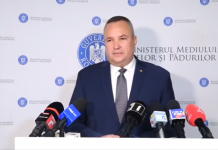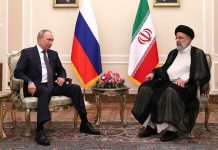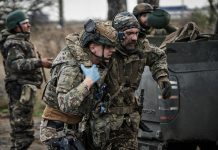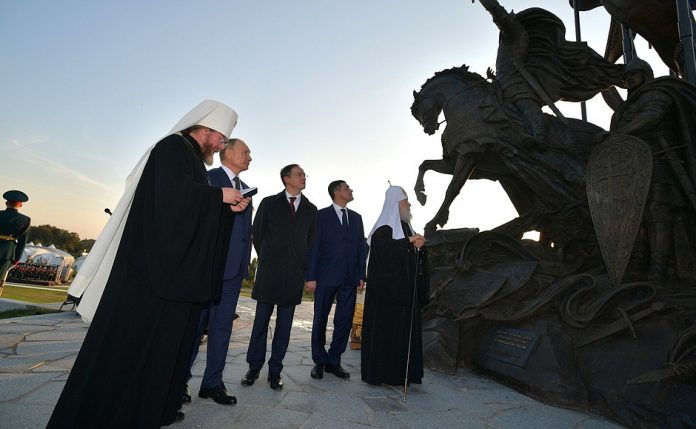The tsarist Minister of Internal Affairs during the 1905-1906 period, Pyotr Durnovo, at one point wrote a memorandum addressed to Tsar Nicholas II (I found the reference and the passage in David Potter, Disruption. Why things change, p. 240-241, Oxford University Press, 2021)
In that document, the author diagnosed the following:
- “The quantity of our heavy artillery…is far too inadequate and there are few machine guns. The organization of our defensive systems has scarcely been started… The network of strategic railways is inadequate. The railways possess a rolling stock sufficient, perhaps, for normal traffic, but not commensurate to the colossal demands which will be made upon them in the event of a major war. Finally, it should not be forgotten that an imminent war will be fought with the most civilized and technologically advanced nations. Every previous war was followed by something new in the realm of military technique, but the technical backwardness of our industries does not create favorable conditions for our adoption of the new inventions.”
…and made the following prediction:
- “In the legislative institutions a bitter campaign against the Government will begin, followed by revolutionary agitation throughout the country, with socialist slogans, capable of arousing and rallying the masses, beginning with the division of the land and succeeded by a division of all valuables and property. The defeated army, having lost its most dependable men, and carried away by the tide of primitive peasant desire for land, will find itself too demoralized to serve as a bulwark of law and order. The legislative institutions and the intellectual opposition parties, lacking real authority in the eyes of the people, will be powerless to stem the popular tide, aroused by themselves, and the Russians will be flung into hopeless anarchy, the issue of which cannot be foreseen.”
Not long after, the First World War began, in which the tsarist army faced the most serious of shortages with millimeter precision, all anticipated by Pyotr Durnovo. In the next stage, the country plunged into what is so well known today: anarchy, civil war, the fall of the tsarist regime, the rise of the communist regime.
How prophetic the words of Nicholas II’s former minister are once again, today, today when a dictator with “enlightened” airs has replaced the inept tsar at the helm! It is irrelevant whether or not there was, a century or so later, a whistleblower of Durnovo’s caliber in Putinist circles of power – and one to have his sharpness of diagnosis and anticipation.
After all, he had been one in the time of the last tsar for nothing, if his work was so “fruitfully” ignored at the highest level. It is clear, however, that the war in Ukraine is, for Russia’s Armed Forces today, the litmus test of poverty, disorganization and carelessness, which was the First World War for the tsarist armed forces of Nicholas II. Then, it is just as clear today, as it has been for more than a century, that the war that Putin embarked on as if he had thrown under the guillotine not a country, but the bared throat of a chicken, is “undertaken with the most civilized and technologically advanced nations”.
Today’s advanced nations, which Putin has been demonizing for years from the well-known “traditional-orthodoxist” positions, are those that tear apart the Russian military on the Ukrainian front and the Russian economy on domestic and foreign fronts. Weapons, intelligence and sanctions calmly and thoroughly crush every fiber of futile and cancerously impotent Russian aspirations. However, since on the military front we can gather more easily and in a noble quantity information regarding the disaster of the Moscow army, thanks to multiple sources that the Kremlin cannot control, the following represents a review of the impact on the other key-front, otherwise as well known as the military front, but it something harder to understand by the general public – the front of Western economic and financial sanctions, in this case their grassroots impact, in the deepest areas of the Russian economy.
Only disinterest or a falling under the hypnosis of Russian propaganda can screen this impact, which is coining nothing else than the fact that it is the West that comes out with a bruised face from the box of sanctions. It’s a cheap strategy, of the rat huddled in the corner, showing its fangs, but it has no room for maneuver and is also surrounded. Putin likes the rat parable, but it doesn’t work in his favor. But whatever Russian propaganda might whisper – on social media networks, in newspapers and on TV – not only is the impact of the sanctions oppressive for Moscow, but it is also naturally amplified by the primitive configuration and structure of the Russian economy: export of hydrocarbons and export of military equipment. The rest of the spheres, in the greater GDP equation of Putin[s Russia, are, unfortunately for the Russians and the regime itself, simply peripheral.
Thus, the review in short:
- Kommersant wrote on Tuesday about the end of even positive corrections in the dynamics of Russian GDP, with an emphasis on the carousel of collapsing imports and falling consumption. The economy is fully impacted, ordinary Russians are saving primarily on durable and luxury goods, but also on food. Interestingly, an indicator related to people’s confidence in the progress of the economy reveals much higher confidence in Russians who get their information from TV, so where we have an indisputable monopoly of state propaganda, and much lower in Russians who get information from YouTube, where pollution of the official discourse can be avoided as much as possible. HERE
- Since the outbreak of hostilities in Ukraine and the related geopolitical and economic crisis, 59% of Russian consumers have reduced their purchases of imported products and consumer goods, also due to their lack of distribution on shelves, Kommersant writes, citing a study by online hypermarket Vprok.ru Perekrestok (part of the X5 Group) and research center ResearchMe. According to the survey, over 40% of Russians cannot find an equivalent alternative to imported products, for all categories, and 15% of consumers are not ready to give up foreign products. HERE
- Four Russian economists, considered to be reliable by Meduza, spoke these days of a Russian economy that is boiled like a frog, on low heat and at the flame of Western sanctions. They also discussed the fact that, although some economists had expected it to be crushed like a bewildering cobra bite, in reality the Russian economy has fallen into the “embrace” of a boa constrictor, but the end will be the same. Experts believe that at this rate Russia’s economy is becoming increasingly incapable of sustaining a war on the initial scale and, essentially, on the scale Moscow intends. Others recognize the efforts of the Russian state to overcome the handicap of the export embargo by reorienting to destinations such as India and China, especially for hydrocarbons. Yes, in the short term, Russia benefits from high oil and gas prices, but in the medium and long term, it loses out on exported volumes, as neither India nor China can absorb all that the EU had absorbed, and then absorb everything anyway at prices of discount, as Western sanctions have given India and China strong positions in trade negotiations with Russia. HERE
- Then there are other problems – for instance regarding imports. Sanctions prevent Russian companies from accessing spare parts and components for manufacturing. The aeronautics sector is suffering, as is the automotive sector, where the collapse of the car industry is somewhere around 90%. The Russians went so far as to give the green light to the sale of cars without airbags, for example, or ABS braking. As a Le Monde editorial showed the other day, Russia has become a ruined Potemkin village, behind its facade the cracks are sliding down to the foundations of the Russian economy. HERE
- Planes are still flying, but this is because the Russian state went into a kind of rapture, through forced nationalization, because many aircraft of Russian companies are leased from Western companies, so they are not their property. Then, some of the devices begin to be dismantled to ensure the maintenance and repair of those kept in operation. HERE
- A shipping container crisis sets in, the first sign appeared in spring. HERE
- There is a deepening crisis, starting in June, of bearings for freight cars, reaching almost 10,000 that will be paused in early autumn. However, with these wagons, coal and weapons necessary for war are transported. HERE
- There are reports that Moscow is looking to buy weapons from Iran and North Korea, a sign of the growing inability of the military-industrial complex to manufacture enough of what it needs for the front. HERE and HERE
- Russia’s dependence on China is increasing on multiple levels, including the trucking industry. Chinese brands are starting to take a serious bite out of the market share of Western ones (gone according to sanctions), but also the Russian ones (with increasingly economically and technically impotent factories). HERE
- Waiting time for mundane repairs of mundane mobile phones have increased, because there are no more pieces, no more parts. HERE and HERE
- The largest European suppliers of equipment for mobile communication networks in Russia had traditionally been the Swedish company Ericsson, whose market share, according to Kommersant sources, reached 20%, and the Finnish company Nokia with a 30-40% market share. In recent years, however, the presence of both companies has declined under pressure from China’s Huawei. After the start of the military operation in Ukraine, Ericsson and Nokia suspended their activity in Russia, and Intel, Dell, AMD, IBM, HP and Juniper also stopped deliveries and signing new contracts. According to the Association of Electronics Developers and Manufacturers, annual sales of telecommunications equipment on the Russian market (including imported ones) exceed $4 billion, while the domestic market does not exceed $780 million. HERE
- And also in the market of phones, tablets, laptops, the Chinese invasion of the Russian market is… as big as China. HERE
- Nvidia has stopped renewing and selling licenses for its cloud gaming software to Russian companies. The licenses allowed the optimization of equipment operation and several players to connect at the same time. Following Nvidia’s decision, prices for cloud gaming services have already started to rise, Kommersant notes. Problems may also begin in the work of supercomputers Sberbank, Yandex and MTS, which are based on solutions from Nvidia, Russian experts warn. HERE
- Russia risks seeing its meat production shrink. The continuous increase of prices of veterinary drugs imported from abroad threatens to reduce meat production in the Russian Federation, forcing the Ministry of Agriculture to seek solutions, writes Kommersant. According to the publication, the ministry plans to allocate preferential loans to agribusiness for the purchase of veterinary pharmaceutical products, provided that the drugs are 50% Russian. Industry associations argue that the measure can only lead to further increases in drug and vaccine prices. HERE
- Chinese logistics companies have doubled container shipping prices since early spring. Thus, if in February the delivery, by sea, of a container from China cost 6,000 dollars, well, by summer it already cost 11,500 dollars. A similar situation concerns deliveries from Turkey, say manufacturers of home appliances and electronics, quoted by Kommersant. HERE
- Problems associated with export of potassium were the main reason for the reduction of the export of mineral fertilizers in the first half of the year. According to the Ministry of Industry and Trade, during that period exports decreased by 7.2%, but Kommersant interlocutors believe that a recovery would hardly be possible in the second half of the year. The reason? Given Russian inability to use Baltic ports, building new supply chains will take time. HERE
- Dark clouds also hang over Russia’s great liquefied gas projects. Sanctions have brought it down on Iran, as key equipment for high-tonnage liquefaction is produced only in “unfriendly” countries. As such, the implementation of the Arctic LNG-2 and Baltic LNG projects, already under construction by NOVATEK and Gazprom, is questionable. Russias critical dependence on supplies of Western LNG equipment has been evident since 2014. Since then, attempts have been made to establish import substitution, but with limited success. Until now, the only example of an LNG line entirely on Russian equipment was NOVATEK’s fourth Yamal LNG line, with 0.9 million tons per year. But during its construction, many difficulties arose, and, as Kommersant notes, it still works intermittently. In addition, this line has a capacity several times smaller than that usually used in large factories (5–7.5 million tons). According to the energy strategy until 2035, by that time the Russian Federation was supposed to produce 140 million tons of LNG per year (now it produces about 28 million tons), and Russia’s share of the global LNG market should have reached 20% Given the sanctions, this goal is unlikely to be achieved. HERE and HERE
- State company Rosseti fails to meet the deadline for the construction of the electrical grid infrastructure for the expansion of the Eastern Polygon. This refers to three power transmission lines and substations of the Baikal cluster, which will not be built on time, because companies from “unfriendly” countries have refused to supply the necessary equipment, Kommersant notes. According to the quoted source, commissioning will be postponed nine months,;this was also agreed upon by the Russian president, Vladimir Putin. In this context, Kommersant sources from the Russian Railways show, the volume of traffic along the Eastern Polygon will be limited to the current level. If the power supply is not commissioned by the end of the third quarter of 2023, there could be a noticeable shortfall in capacity. HERE
- Metallurgical plants may reduce steel production by 15% by the end of the year, and the largest decrease will occur in the second half of the year, Kommersant notes. According to the cited source, flat laminated profiles will suffer the most, and plates the least. The negative forecasts for production represent metallurgists’ argument for abolishing or adjusting the excise duty on liquid steel, designed to take away from the metallurgists’ excess profits, which is now out of the question. HERE
- Russian metallurgists are critically dependent on key foreign equipment (even rolls for rolling mills), and due to Western sanctions they will be forced to look for solutions to somehow acquire them or switch to similar lower-quality products, Kommersant notes. The quoted source also shows that the import substitution process can take at least ten years, which is evident from the industry development strategy project, developed by the Ministry of Industry and Commerce with a 2030 horizon. So far, metallurgical companies have been relatively successful in finding substitutes for raw materials and components, but access to large equipment remains limited, which threatens to lead to the abandonment of development projects. Analysts believe that this problem will not be solved quickly. HERE
- At the same time, unprecedented sanctions against the background of the war in Ukraine are forcing Russian leadership to look for alternative partners and to strengthen relations with countries that until recently were in the periphery of the Kremlin’s attention. In recent months, there has been most often talk of new joint projects and plans of Moscow with representatives of the Middle East region. But, as Novaia Gazeta Europa (which goes into details of Russia’s tour of force imposed by a new reality) recently noted, this Kozachok will last until the first betrayal. HERE
- Moreover, we should not miss an increasingly painful fact: the exodus of foreign brands and the “addiction” of Russian consumers is turning Russia into a scammer’s paradise. HERE
- In any case, the specter of poverty is incurable. In dozens of Russian regions, the beginning of the school year swallows the average family income. It has gone so far that some Russians are lured into the war by authorities with the promise of money for children’s supplies.
- We conclude with a reference towards a solid analysis. The Russian army – the second most powerful army in the world, according to Global Firepower – faced a shortage of modern weapons shortly after the invasion of Ukraine, notes Novaia Gazeta Europa. According to the quoted source, it was necessary for Moscow to throw obsolete Soviet equipment into the war, which is dangerous both for civilians and for the soldiers themselves. Novaia Gazeta Europa studied what weapons were in the inventory of the Russian army before the invasion and also analyzed more than 4,000 units of destroyed Russian equipment. In this way, they found out why, instead of “fifth generation weapons”, the Russian army fights with 1960s tanks and hits commercial centers with anti-ship missiles. “No one knows what will happen first: whether the ammunition will run out or the launch tubes will wear out, but sooner or later the army will face these problems”, comments Kirill Mihailov, from CIT. “Russia is not able to recover the losses. In 2021, the factories delivered 300 tanks, while Oryx already counted 964 tanks destroyed in the six months of war. It turns out that in one year Russia produces four times less tanks than it used in six months. According to the interviewed experts, the sanctions imposed by the ‘unfriendly’countries make it impossible to rebuild the Russian military-industrial complex, which is largely dependent on imported components. ‘We don’t have a single type of weapon that is 100% made in Russia. Even tank engines are produced at the plant, which during the 2011 modernization was equipped with foreign equipment. Two more years and it won’t be able to produce engines – there are no imported components. There is no other factory,” explains Luzin.’ By 2030, there will be nothing left of the military-industrial complex – only individual enterprises that will continue to rivet what they can.” HERE
- BONUS. The Russian soldier entered the war poor and will come out of it poorer. And to make up for it, he does what we would hardly think could be done: arms trafficking, for an extra penny, and corpses, for…bonus success. HERE
IMPORTANT! In the context of the war in Ukraine, we can no longer speak of Western sanctions in a “usual” regime, but of an unprecedented economic war, with a complex impact and, very likely, with lingering effects after the actual end of military hostilities.
- Read also: Our daily selection of articles translated from Russian, on current affairs in Russia, in the special section of Universul.net, RUSSIAN PRESS
















